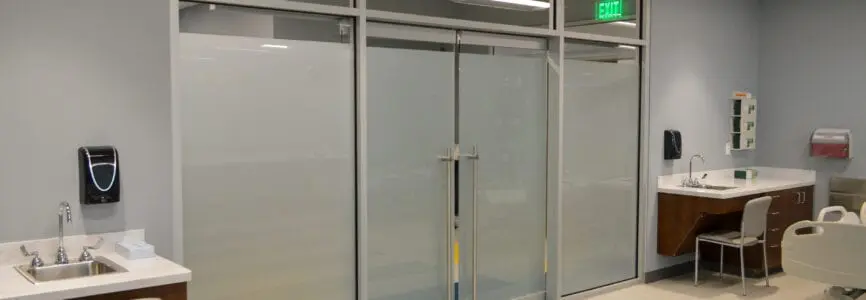Bioethics Forum Essay
The Bioethics of Built Health Care Spaces
In recent decades, our understanding of the role the environment plays in shaping us and our interactions has expanded immensely. Researchers have examined the profound effect social and environmental factors can have on ethical behavior and decision-making. Yet, design choices in the built health care environment raise substantive bioethical issues that demand the attention of bioethicists and ethical inquiry. It is time for the built environment to be considered alongside other parameters of care.
While some health care architects have, for decades, been exploring the power of environmental factors to motivate action, inspire emotive responses, and even prevent violence, little of this terrain has been explored in bioethics. And yet the design of health care buildings affects the rates of adverse events such as patient falls, medication errors, and iatrogenic infections.
Around the world, an alarming percentage of Covid-19 deaths occurred in long-term care facilities. Thirty-eight percent of U.S. Covid deaths have occurred in nursing homes and assisted living facilities, raising many questions about their design and safety. Probing deeper reveals significant inequities related to health care environments. In Ontario, Canada, for example, the death rate was highest in older long-term care facilities built with an outdated design standard that permitted four-person rooms and large communal dining areas. The newer design standards limited occupancy to two people and decentralized dining and other resident socialization spaces to reduce the number of people in each area. While one-third of the province’s facilities followed the old design standard, they accounted for 57% of the Covid-19 deaths in long-term care homes as of June, nearly doubling the risk of death due to Covid.
When the World Health Organization declared SARS-CoV-2 a global pandemic, multiple individuals, professional alliances, and governmental agencies engaged to rapidly develop a decision and design framework to separate and treat various types of Covid-19 patients. In the early days of this response, none of these frameworks were coordinated and few cross-referenced each other’s work, and certainly no bioethical standards were considered. The American Institute of Architects created a task force (including two of the authors) that later issued design guidance on these subjects, which the U.S. State Department translated and recommended to their embassies globally as best practice. However, this well-intentioned rapid response fell short of bioethical inquiry. Questions of patient choice, equitable distribution of supplies, and patient privacy were not considered by the architects.
The intervention in need of study here is the building design itself. Health care architecture is an important quality factor in health care delivery as well as health outcomes. For example, a 2016 McGill University study quantified design and infection control—for every meter walked to a sink, provider handwashing likelihood decreased by 10%. Providing the same level of care to all patients is presumed in hospitals, but the built environment may preclude that in subtle ways. One study of 664 patients found severely ill patients may experience higher mortality rates when placed in intensive care unit rooms that are out of direct lines of sight of nursing staff and physicians.
We find many well-trodden issues in bioethics emerging in this context. Consider the ethical territory that includes “nudging,” behavior modification, and related practices. The built environment is being increasingly used to modify behavior without ethical inquiry. For example, dementia care facilities are being designed to make the residents think they are somewhere else. Often this includes the illusion that patients are free to leave. Creating this illusion may involve deception, such as disguising exits to appear like bookcases or placing a dark mat in front of a door to discourage patients from approaching it out of fear that the mat is actually a hole in the floor. We argue these efforts are no different in kind than those undertaken in medical research or pharmaceutical development and represent an overlooked aspect of bioethical inquiry and belong in the bioethics portfolio.
Decisions to influence behavior through design should be considered like other efforts to influence behavior. The intended goal is the same, and that is what is ethically salient. It is time for the built environment to become a part of the same calculus as other physical and psychological factors affecting care.
- Funding and scholarly research should investigate the health effects of specific architectural interventions.
- The ethical issues of architectural experimentation require bioethical analysis to assess the harms benefits and obligations of disclosure to those affected by the space.
- Bioethicists need to engage with health care architects to develop a mechanism for considering the effects of different designs on patient outcomes, including equal access and treatment, prevention of comorbidities, and use of space to influence people.
The opportunities to create lasting improvements in equitable, efficient care delivery, and preparedness for the next public health emergency should motivate architects, bioethicists, and health care leaders to take up this challenge.
Diana Anderson, MD, M.Arch, is a health care architect and a geriatrician. She completed a bioethics fellowship at the Harvard Medical School Center for Bioethics and is currently a research fellow in geriatric neurology at the VA Boston Healthcare System. Twitter: @dochitect. William J. Hercules, FAIA, FACHA, FACHE, is the CEO of WJH Health, an international health facility strategy firm. He is a past-president of the American College of Healthcare Architects, a member of the American Institute of Architects’ national strategic council, and faculty for the American College of Healthcare Executives. Twitter: @BillHercules. Stowe Locke Teti, HEC-C, is a clinical ethicist at the Invoa Fairfax Medical Campus in Virginia, and executive editor of Pediatric Ethicscope. Twitter: @StoweTeti.













